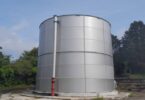A comprehensive AI-based approach to maximise solar photovoltaic system (PV) system efficiency for water pumping stations has won Riventa a coveted place as a finalist in the £4M Water Discovery Challenge competition.
An 18-month event that brings together a blend of financial and non-financial support to help innovative solutions launch and succeed in the water sector, Riventa’s method of offsetting electricity use on pumping stations by installation of solar PV systems is one of just 20 new cutting-edge solutions to be chosen.
Encouraging bold and ingenious innovation that can help solve the biggest challenges facing the water sector, Discovery aims to facilitate engagement for suppliers with water companies, backed by a £200M Innovation Fund that has been established by Ofwat, the Water Services Regulation Authority for England and Wales.
The 20 finalists will initially share £1M in funding, and then, up to 10 companies will go on to be awarded up to £450,000 each (as well as additional support), to develop further and test their ideas.
‘Maximise the internal rate of return’
Speaking for Riventa, who have worldwide experience in optimising the performance of pumps, blowers and turbines, Dr Tom Clifford, said:
“Water Companies very much want to offset electricity use on pumping stations by installing solar PV systems, so that they can maximise the internal rate of return (IRR). However, pumping networks are subject to multiple tariffs throughout the day, varying in cost (by some 2.5 times), where the current lowest charges are during the night, with the network also containing considerable water storage to decouple supply and demand. The receipt of solar energy will be at zero charge throughout the ‘sunshine’ hours, thus altering the possible optimum pumping schedule by effective use of the storage.”
He added: “The technical challenge is to determine how the pumping schedule will change as PV install capacity varies, at each of the sites. It is quite complex to find the optimal solution, because the pumping stations are linked in the network, meaning any change in load profile will impact the operating schedule at other sites. Varying array size will also alter solar capture, changing the daily tariff structure (requiring re-optimisation of the pump schedule). Solar capture will of course vary throughout the year, impacting the IRR result by array size selections. Because all three points are linked, the multifaceted problem will be optimised by an AI algorithm. Over a given lifespan, 25 years, a design will be calculated that achieves the greatest discounted Net Present Value (NPV).”







